Exploring the Cullinan I Diamond: History and Impact
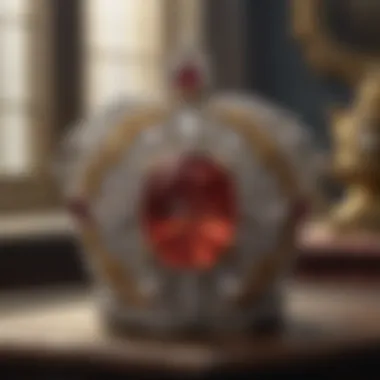
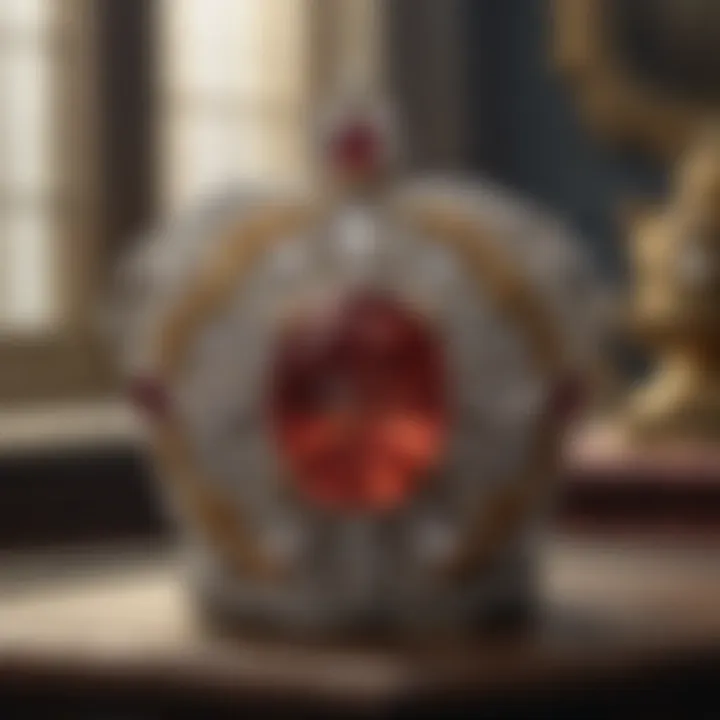
Intro
The Cullinan I diamond, often dubbed the Cullinan Star, boasts a history as sparkling as its facets. It is not merely a gemstone; it is a piece of history that tells tales of power, artistry, and culture. Found in the early 20th century, its journey from a rough stone to a center of attention among crowned heads and collectors alike makes it an object of fascination.
In this analysis, we will delve into its characteristics, dissect its compelling backstory, and ponder its status, both in historical and contemporary contexts. Whether you’re a gemstone enthusiast, a seasoned collector, or someone simply intrigued by stunning gems, understanding the Cullinan I will broaden your appreciation for the rarity and beauty that stones of this caliber represent.
Gemstone Overview
Definition and Characteristics
What sets a gemstone like the Cullinan I apart from the multitude of its peers? Gemstones, by definition, are precious or semi-precious minerals that have been cut and polished for adornment. The Cullinan I, weighing in at an astonishing 3,106 carats, holds the title of the largest clear cut diamond polished from the rough material extracted from the Cullinan mine in South Africa.
Its physical properties are nothing short of remarkable:
- Carat Weight: 3,106 carats
- Clarity: Flawless, with minimal inclusions visible only under magnification
- Color: A vibrant, colorless hue that reflects and refracts light magnificently
- Cut: Although a cushion cut, it is enhanced with numerous facets that enhance its brilliance.
With these characteristics, it stands as a representation of what gemstones aspire to become. The clarity and colorless nature plays a crucial role in its valuation, making it prized among collectors and jewelers alike.
Classification of Gemstones
Gemstones, including the Cullinan I, fall into various classifications based on their characteristics and origins. Generally, these classifications can be broken down into two main categories: precious gemstones and semi-precious gemstones. While traditional classifications might include diamonds in the precious group, the Cullinan I has earned its status through both its size and history, making it unique among diamonds themselves. This stone also redefines our understanding of value in the gemstone world.
Moreover, diamonds can further be categorized into natural and synthetic. The Cullinan I is a natural specimen, formed over millions of years under extreme heat and pressure, a fact that adds to its allure and desirability.
Historical Significance
Ancient Uses and Cultural Importance
Historically, diamonds have held a significant position in various cultures. In ancient times, they were often believed to possess magical qualities, thought to protect their wearers from harm. The Cullinan I is a vivid reminder of this lineage, being more than just an ornament; it symbolizes power and endurance. It has been a part of royal regalia, serving as a statement of wealth and status for those who adorned it.
Myths and Legends Surrounding Gemstones
Legends surrounding gemstones are as varied as the stones themselves. Among diamond enthusiasts, the Cullinan I is frequently referenced in tales of kings and kingdoms. One particularly captivating story tells of how diamonds were believed to ensure victory in battles and safe travels.
Historical Context of Diamonds
The history of diamonds intertwines itself with human culture, economy, and art. Understanding this context sheds light on how diamonds like the Cullinan I have taken center stage not just as gemstones but as symbols of power, wealth, and beauty. The diamonds' journey from the earth to the crown jewels exemplifies a centuries-old fascination that goes beyond mere aesthetics.
Diamonds are not just a girl’s best friend; they hold stories steeped in tradition and historical significance. The way societies have valued these gemstones reflects broader shifts in social hierarchies, technological advancements, and even economic theories. From early usages in religious artifacts to the modern interplay of capitalism and luxury, the value of diamonds has always been tied to their perception in society. Some have even claimed that their allure holds a certain magic, which is a delicious little tidbit that speaks to human psychology itself.
Exploring diamonds' historical context allows us to appreciate the Cullinan I not merely as a large hunk of carbon but as a cultural artifact that embodies human ambition and artistic mastery. The intrigue doesn’t stop at its size; it extends to the age-old tales that shape its legacy.
The Origin of Diamonds
Diamonds have an ancient lineage, its origins traced back billions of years beneath the Earth's surface. Formed under extreme pressure and temperature deep within the mantle, their existence is an artifact of geological processes that date back to times when dinosaurs roamed the planet. The earliest known diamonds surfaced in India, a region renowned for its intricate gem-cutting techniques.
Even then, diamonds forged their reputation, believed not only to possess unmatched hardness but also mystical properties. In many cultures, they symbolized strength and invincibility, and their dazzling brilliance enticed the affluent, leading to trade routes developed specifically for them. Today, India may be known more for its labor force in cutting and polishing, yet it was indeed the cradle of diamond lore.
The discovery of diamonds in Brazil and South Africa in the 18th and 19th centuries respectively marked a pivotal shift in their availability and global status. It ushered in the era of diamond mining with serious ambitions and strategies. Many of the massive diamonds, including the Cullinan, emerged from these regions, cementing their place in history not just as gems but as icons of human achievement.
Historical Significance of Large Diamonds
Large diamonds have always wielded significant power—both literally and metaphorically. Their sheer size captures attention, and their rarity elevates them as status symbols among elite circles. These gemstones have adorned crowns and ornaments of monarchs, priests, and leaders, thus elevating them beyond mere jewelry into the realms of political influence and heritage.
The Cullinan I, weighing an astounding 3,106 carats, stands as a testament to this narrative. It turned heads when it was discovered, as did its subsequent transformation into the Star of Africa after cutting. This diamond became synonymous with the British Empire’s wealth and reach, solidifying its important role not just within the royal accessories but as part of national pride.
A striking example of historical importance is the Curse of the Hope Diamond, which has been said to bring misfortune to its owners. Such legends enhance the allure of large diamonds, binding them to cultural tropes that elevate their narratives further. The richness of stories, whether political or mythical, encapsulates the significant motif these diamonds hold across eras.
"Diamonds are a reflection of civilization—progress and power etched in stone."
In summary, the historical context of diamonds—including their origin and the importance of larger specimens—reveals a multidimensional narrative. By diving into these realms, we appreciate not just the Cullinan I but also the deep, intertwined relationships we have had with diamonds throughout human history.
The Discovery of the Cullinan Diamond
The story of the Cullinan diamond is a remarkable one, entwined with the historical fabric of South Africa at the turn of the 20th century. Its discovery is not just an event; it serves as a pivotal moment that illustrates the vast wealth Africa was yielding through its mineral deposits, spurring both economic growth and colonial interest in the continent. This diamond, after all, is not merely a jewel but a symbol of the complexities surrounding gem exploitation.
Understanding the discovery of the Cullinan diamond involves a deeper dive into the geographical and socio-political contexts of the time, both of which significantly influenced its journey from the earth to the crown.
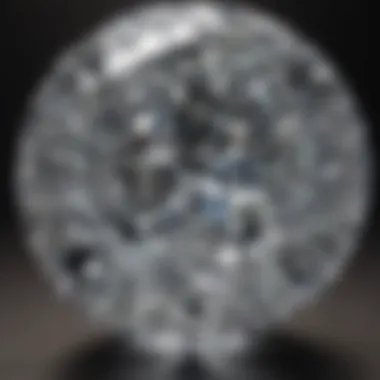

Geographical Background
The Cullinan diamond was unearthed in 1905 at the Premier Mine, located just outside Pretoria. This area of South Africa is rich with mineral resources, primarily due to its location on the Kaapvaal Craton, one of the oldest and most stable geological formations in the world. The mine itself was established during the diamond rush of the late 19th century, drawing numerous prospectors and miners to the region.
South Africa's geographical advantages go beyond just diamond deposits. The climate is typically favorable, and the discovery of gold in nearby regions had already set the stage for a bustling mining industry. Thus, when the Cullinan diamond was found, it was amidst an atmosphere teeming with ambition and competition.
"The soil of South Africa has long been an altar where dreams of wealth and power have been laid bare to the whims of fate and fortune."
Discovery Details
The discovery itself was rather serendipitous. In January 1905, a mine superintendent named Frederick Wells noticed something glimmering in the earth while on his rounds. Upon closer inspection, he unearthed a massive, raw diamond that would soon take the world by storm. Earth to eye, the stone weighed about 3,106 carats, or approximately 1.37 pounds, making it the largest gem-quality diamond ever found.
Wells' find initially perplexed the mining company and the community alike. There was cautious excitement as the sheer size of the diamond was unlike any other. Some revisited local lore, recalling the tales of an ancient African legend that spoke of a diamond of astonishing magnitude.
In no time, the diamond drew significant attention across the globe, leading to its eventual purchase by the Transvaal Government. Later, it would travel to England and, with much fanfare, become a part of the British Crown Jewels.
Key Points of Interest:
- The Premier Mine was a hotspot for diamond mining when the Cullinan was discovered.
- The geographical setting allowed for the unearthing of not just the Cullinan, but numerous other notable diamonds.
- Frederick Wells' initial discovery highlights the blend of luck and skill inherent in mining endeavors.
Cutting and Craftsmanship of Cullinan
The journey of the Cullinan I diamond doesn't just begin with its discovery; it extends into the artistry of how it was shaped and polished. Cutting a diamond is a precise craft, akin to sculpting; each facet must be expertly placed to maximize light reflection and enhance the diamond’s natural beauty. This section focuses on the pivotal role that cutting and craftsmanship played in turning a raw stone into a jewel that would ultimately become part of royal heritage.
The Cutting Process
When the Cullinan diamond, originally weighing an astonishing 3,106 carats, was unearthed in 1905, it held immense potential. The first challenge was to determine how to cut this colossal gem without jeopardizing its integrity. Experts of that time took great care—much like a chef who delicately carves a piece of fine meat, preserving flavor while presenting it beautifully.
The cutting process was no small feat, as the diamond was divided into several pieces to ensure clarity and brilliance. The master cutter Joseph Asscher used an innovative method called the "scoring" technique, which involved creating grooves in the diamond using precise cleaving tools. This method was instrumental in achieving the desired shape while maintaining the diamond's quality. Here’s a highlight of the different stages involved in this painstaking process:
- Initial Assessment: The diamond was carefully examined to decide the best way to divide it.
- Scoring: The diamond was marked and scored with utmost precision.
- Cleaving: Using controlled pressure, the diamond was split into manageable segments.
- Faceting: This step involved shaping each piece into facets that would catch and reflect light.
Each stage was executed with meticulous attention, ensuring that the essence of the Cullinan diamond was preserved.
Jeweler’s Expertise in Diamond Cutting
The art of diamond cutting thrives on expert skill and deep knowledge of gemology. Master jewelers play a vital role in ensuring that every diamond exhibits optimal brilliance. In the case of the Cullinan I, the craftsmanship extended far beyond traditional techniques.
Asscher's disciplined approach and profound understanding of optics allowed him to craft the Cullinan I into a spectacle of light and clarity. The diamond, once transformed, weighed 530.2 carats and was named the Cullinan I, also known as the Star of Africa. Some key aspects that underline the expertise involved include:
- Understanding of Light: Jewelers must know how light interacts with the diamond. The goal is to maximize refraction and dispersion.
- Technological Advancement: Techniques such as laser cutting have evolved, yet the traditional methods used for Cullinan I resonate with old-world craftsmanship.
- Artistic Vision: Beyond technical skills, jewellers require a creative eye, envisioning how the finished product will emerge, revealing the gem's beauty.
The mastery of diamond cutting not only benchmarks an artisan's skill but also unlocks the hidden potential of each gem, turning raw material into extraordinary ownership.
In sum, the cutting and craftsmanship of the Cullinan I diamond encapsulate a blend of precision, artistry, and historical significance that continues to resonate within the world of gemstones. As each facet beautifully reflects light, so too does it reflect the timeless expertise of those who shaped it.
Physical Attributes of Cullinan
The physical attributes of the Cullinan I diamond play a pivotal role in understanding its value and allure. Often regarded as a marvel in the gemological world, these characteristics not only contribute to its aesthetic appeal but also define its standing in the broader context of diamond ownership and investment.
Carat Weight and Size
Weighing in at an astonishing 530.2 carats, the Cullinan I, also known as the Star of Africa, is imposing by any measure. Its size is not merely a number; it transforms how the diamond interacts with light, contributing to its brilliance.
A diamond of this weight is a rarity. For perspective, consider that a typical engagement ring diamond weighs around 1 carat. Thus, the Cullinan I's weight magnifies its presence—this diamond doesn't just adorn a setting; it commands attention. Gemstone enthusiasts often regard larger diamonds as symbols of wealth and success, creating a unique allure around stones like the Cullinan I.
Clarity and Color
The clarity of the Cullinan I is exceptional, classified as D color, indicating it is devoid of any blemishes or inclusions visible to the naked eye. Such clarity enhances its beauty, allowing for maximum light reflection, which is crucial for creating that mesmerizing sparkle. In the diamond world, clarity is not merely a trait; it’s a benchmark. A diamond of this clarity and color elevates it to an elite class, making it not just a gemstone, but a breathtaking work of nature’s art.
The historical importance of this perfect clarity resonates as well. The Cullinan I has transcended its physical form to become an emblem of power and prestige, recognized and revered throughout history.
Unique Features of Cullinan
What truly sets Cullinan I apart are its unique features. First and foremost is its elaborate and delicate faceting, designed to amplify light performance. Every cut has been meticulously crafted to utilize the diamond’s natural shape and transparent qualities. This craftsmanship also includes a distinct teardrop shape which adds to its elegance and visual impact.
Additionally, the Cullinan I exhibits a unique interplay of light and color that many other diamonds struggle to replicate. The way it captures and refracts light can provoke awe in even the most discerning eyes.
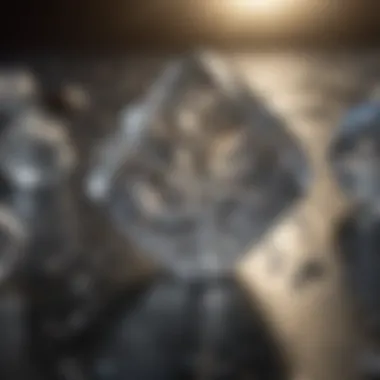
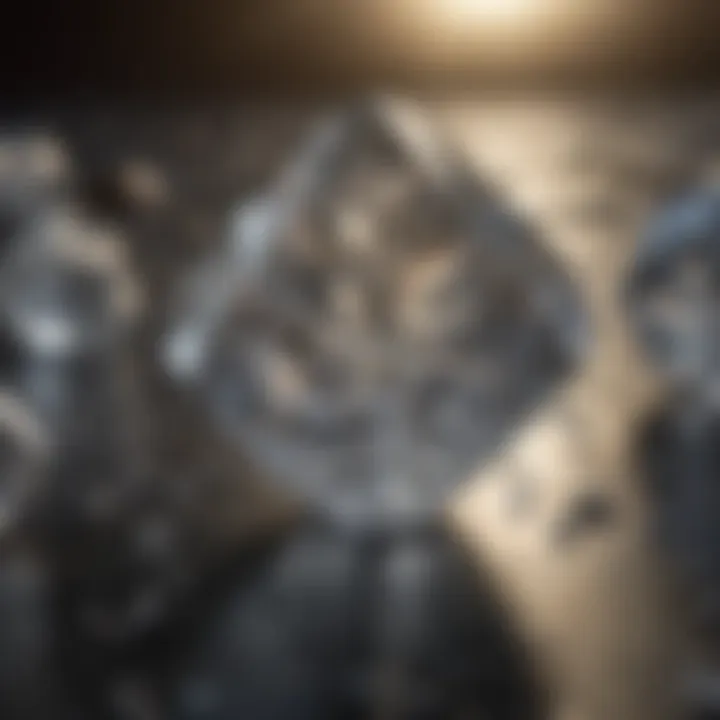
"The Cullinan I is not just a diamond; it is a monumental achievement in both natural and artisanal beauty."
The gemstone also boasts a storied past, having been part of both royal possessions and cultural artifacts. This history adds layers to its uniqueness, making it not just a stone, but a vessel of heritage and exploration.
Understanding the physical attributes of Cullinan I gives deeper appreciation for its significance in both gemological studies and cultural discussions. For experts, collectors, and enthusiasts alike, these facets provide insight into what makes this diamond a treasure of unparalleled grandeur.
Cultural and Economic Relevance
The Cullinan I diamond is not just a glittering gem; its story is woven deeply into the fabric of both cultural identity and economic significance. Understanding its relevance involves delving into how this majestic diamond has been perceived through time and how it shapes perceptions of value in the marketplace and society.
Presence in the British Crown Jewels
The Cullinan I, often referred to as the Star of Africa, holds a prominent place in the British Crown Jewels. Its history within this revered collection adds layers of symbolism and significance.
- Historical Intrigue: The diamond was presented to King Edward VII in 1907 after being cut from the larger Cullinan diamond, the largest gem-quality diamond ever discovered. This event marked the beginning of its storied presence in royal ceremonies.
- Symbol of Monarchy: Wearing the Cullinan I not only showcases its beauty but also represents the wealth and power of the British Crown. It instills a sense of pride and continuity within the monarchy, acting as a bridge connecting past and present.
- Tourism Magnet: The presence of Cullinan I in the Crown Jewels draws millions of visitors to the Tower of London each year. Tourists flock to see this extraordinary piece, contributing significantly to the local economy and enhancing the UK's cultural heritage.
"The Cullinan I, as a flagship piece in the Crown Jewels, is an enduring symbol of British history and identity."
Symbolism in Society
Diamonds, particularly one as illustrious as the Cullinan I, carry with them a multitude of societal meanings. Their symbolism transcends mere aesthetics and taps into deeper human emotions and values.
- Love and Commitment: Beyond the royal connections, Cullinan I echoes the broader cultural sentiment surrounding diamonds as tokens of love and fidelity. When one thinks of engagement rings, diamonds generally stand as a testament to everlasting commitment. Cullinan I reinforces this notion, given its grandeur and historical value.
- Status and Wealth: In contemporary society, owning or possessing diamond jewelry often associates one with affluence and status. This social standing can influence personal relationships and business interactions, as the presence of high-value items can skew perceptions of success and achievement.
- Cultural Narratives: Different cultures attribute various meanings to diamonds. For some, they symbolize purity and invincibility, while for others, they signify protection against misfortune. The Cullinan I, with its bold presence and rich history, encapsulates many of these narratives.
In summation, the Cullinan I diamond is not merely an object of adornment. It embodies a complex interplay of cultural heritage, historical significance, and economic implications that resonate with people from all walks of life. Through its dual role in royal prestige and societal symbolism, this diamond stands as a testament to humanity's fascination with beauty, power, and aspiration.
Market Trends in Diamonds
Understanding market trends surrounding diamonds involves digging into several crucial elements that dictate not only the financial implications of owning such a precious gemstone but also the wider socio-economic factors at play. Diamonds have remained a symbol of status and wealth, and as such, they require keen observation for those engaging in the buy-sell domain. This section aims to highlight significant elements, benefits, and necessary considerations regarding market dynamics, particularly relevant to the Cullinan I diamond.
Investment Value of Diamonds
Diamonds have often been considered a solid investment, comparable to other traditional assets. Their allure is not simply in their beauty but in the potential for value retention, or even appreciation over time. In recent years, the diamond market saw fluctuations, where values sharply increased due to growing interest from investors and jewelry enthusiasts alike.
Here are some standout points to consider:
- Scarcity: Large diamonds, particularly those like the Cullinan I, are not only rare but also becoming increasingly difficult to find in the market. This scarcity often propels prices upwards, especially when demand continues to rise.
- Cultural Significance: There is an emotional value deeply rooted in diamonds. Cultures around the world attach significant meaning to these stones. Such connotations can enhance their market appeal, especially when associated with historical pieces like Cullinan I.
- Long-Term Value: Unlike other forms of investments that may suffer from volatility, diamonds tend to hold their value for decades. This factor appeals to individuals looking for legacy assets, as diamonds can be passed down through generations.
However, diving into diamond investments is not without challenges. It's essential for potential investors to do their homework and seek expert guidance. The diamond market, much like the stock exchange, can be intricate with variables that shift rapidly.
Comparative Analysis with Other Notable Diamonds
When comparing Cullinan I to other legendary diamonds, a tale of uniqueness unfolds. Each diamond carries its own story, quality, and market perception. This analysis shines a light on how Cullinan I stands out among its competitors, thereby influencing its market potential.
- The Hope Diamond: Revolutionizing the way diamonds are perceived, the Hope Diamond centers on not just its quality, but also its intriguing history filled with tales of misfortune and curses. Its blue hue and sizable carat weight draw collectors, often overshadowing other white diamonds in conversation.
- The Koh-i-Noor: Once regarded as the world’s largest diamond, the Koh-i-Noor carries its own historical baggage, intertwined with narratives of conquest and power. Its vibrant color and royal history add layers of complexity to its value.
- The Pink Star: This record-breaking pink diamond drew headlines not just for its beauty but also for its astonishing auction price. It illustrates that colored diamonds can command top dollar, broadening the spectrum of diamond investment strategies.
When comparing these diamonds, many factors come into play: carat weight, historical background, and inherent beauty. Yet, Cullinan I, with its sheer size and clarity, continues to be a benchmark for quality in the diamond world.
“In the realm of diamonds, uniqueness isn’t just a trait; it’s an asset.”
In summation, the market trends for diamonds, especially the Cullinan I, reveal a complex interplay of investment value, historical significance, and comparative analysis with notable diamonds. For gemstone enthusiasts and collectors, understanding these nuances is key to navigating the immensely fascinating and somewhat unpredictable diamond market.
Metaphysical Properties of Diamonds
Diamonds have long held a revered place in not just jewelry but also in many belief systems. This section delves into the metaphysical properties attributed to diamonds, particularly focusing on how these beliefs surround the Cullinan I. The allure of diamonds extends beyond their physical beauty; they are often associated with profound meanings and various benefits.
Beliefs Surrounding Diamonds
For centuries, people believed that diamonds possessed unique energies and properties that can impact human emotions and physical well-being. Here are some key points on what diamonds signify:
- Clarity and Purity: Diamonds are seen as symbols of clarity and purity. Many cultures believe that wearing diamond jewelry helps to clear the mind and enhance one's focus.
- Strength and Resilience: Dubbed the hardest natural material, diamonds represent strength. People often associate their power with durability in relationships and personal fortitude.
- Love and Commitment: Traditionally, diamonds have been linked to romance and fidelity. They are seen as tokens of everlasting love, often gifted during engagements or anniversaries.
- Transformation and Enlightenment: In some beliefs, diamonds are thought to facilitate transformation. They can help shift negative energy into positive energy, leading to enlightenment and greater self-awareness.
These qualities make diamonds sought after not just for their aesthetic appeal but also for their believed spiritual significance in different cultures.
Cullinan in Modern Gemstone Lore
The Cullinan I, also known as the Great Star of Africa, holds a storied legacy in gemstone lore today. Its vast size and clear brilliance contribute to the numerous legends woven around it. Here’s how it fits into modern beliefs:
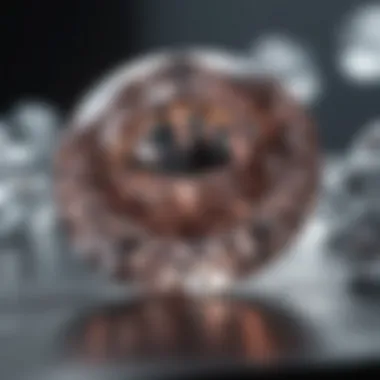
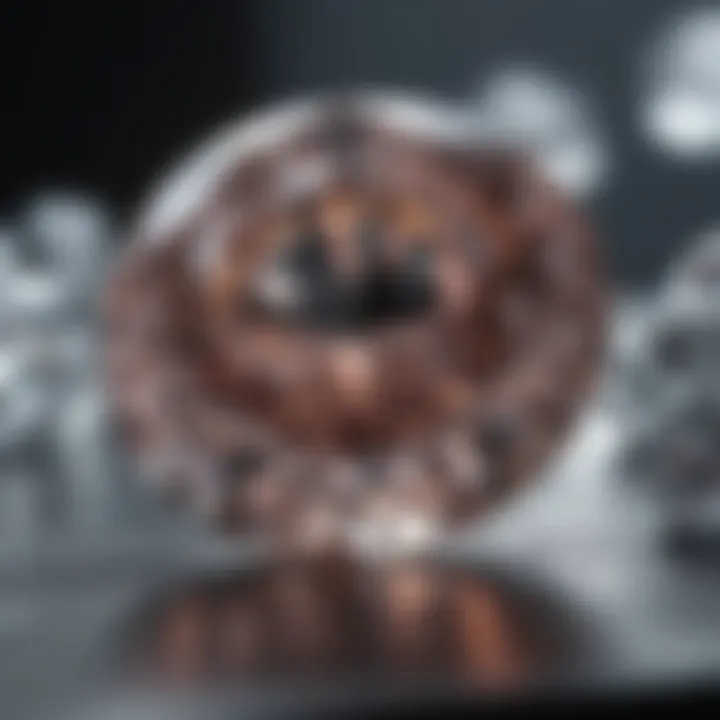
- A Symbol of Achievement: Much like its place in British royal history, Cullinan I symbolizes achievement and prominence. Its ownership can be seen as a mark of high status, stirring aspirations in gemstone enthusiasts around the world.
- Connection to the Crown: Being part of the British Crown Jewels, it encapsulates the power and glory of monarchy. Many believe that the diamond carries the energy of historical events and regal legacies, making it not only a piece of art but a vessel of history.
- Energizing Forces: Those who place their faith in gemstones often think that Cullinan I offers dynamic energy, inspiring its possessor to take bold steps in life.
Despite being a physical object, Cullinan I resonates with emotional weight, embodying dreams, aspirations, and the collective history of its legacy.
"The Cullinan I serves not merely as a diamond but as an eternal emblem, encapsulating narratives of history, passion, and aspirations within its spectacular facets."
As we move through the complexities of diamonds, it’s essential to recognize that their significance transcends mere aesthetics. The metaphysical properties associated with diamonds, particularly the Cullinan I, draw us into a deeper appreciation beyond the surface glitter.
Preservation and Care of Diamonds
The preservation and care of diamonds, especially significant pieces like the Cullinan I, stands as a vital aspect when discussing their longevity and brilliance. It’s not merely about valuing the physical appearance of a diamond; proper handling and maintenance extend its life, preserve its value, and uphold its status as a symbol of wealth and beauty. Knowing how to take care of diamonds is paramount for collectors, jewelers, and enthusiasts alike. When you invest in a diamond, you’re not just purchasing a piece of jewelry; you’re owning a part of history.
One key benefit of maintaining diamonds properly is to prevent scratching and damage. Despite diamonds being the hardest natural material, they can still suffer from physical damage if not treated with respect. Knowing which materials can come into contact with your diamond is crucial. Diamonds can scratch other stones, but other stones can scratch them, too.
Recommended Practices for Maintenance
Caring for diamonds requires a few simple yet effective practices:
- Regular Cleaning: Cleaning your diamond regularly helps to maintain its sparkle. A mixture of warm water and mild soap is often all that's needed. Use a soft brush, like a toothbrush, to gently scrub around the settings where dirt can accumulate.
- Avoid Harsh Chemicals: Sometimes, household cleansers can damage the metal settings. It's important to use gentle solutions or designated jewelry cleaners.
- Safe Storage: Always store your diamond jewelry in a soft, separate pouch or in a jewelry box that minimizes movement. Avoid tossing your diamond rings into a drawer, where they can clash with other pieces and cause scratches.
- Wear Responsibly: Remove your diamond rings or jewelry before engaging in activities like gardening, exercising, or swimming. This mere act can prevent unnecessary wear and tear.
- Scheduled Professional Cleanings: Regular check-ups with a professional jeweler are advisable, allowing them to assess your diamond’s condition and clean it with specialized techniques.
Restoration Techniques and Considerations
In the unfortunate event that your diamond does sustain damage, knowing restoration techniques can be invaluable:
- Re-polishing: A jeweler can carefully re-polish a scratched diamond to restore its brilliance. They will utilize specialized tools and techniques to remove fine scratches without diminishing the diamond's natural structure.
- Repairing Settings: Often, the mounting of the diamond may need repair. A loose setting not only poses a risk to the diamond itself but can also lead to loss. Having the prongs checked and maintained is crucial to ensure the diamond remains secure.
- Insurance and Appraisal: Always consider insuring your diamond and having it appraised periodically. Insurance protects your investment, while an appraisal ensures that you have a current understanding of its value, should you need repairs or eventual resale.
"A diamond is a reflection of both beauty and fragility. Caring for it is not just a choice; it's a necessity."
By embracing these preservation and care techniques, you ensure that your diamond not only retains its physical charm but also its sentimental and economic value. Diamonds, particularly awe-inspiring examples like the Cullinan I, are treasures worth protecting.
Personal Reflections on Diamond Ownership
When thinking about diamonds, it’s easy to get caught up in their glittering allure or their monetary value. However, personal reflections on diamond ownership dive much deeper. It's about the stories behind each stone, the moments they commemorate, and the emotions they evoke. Diamonds, particularly one as significant as the Cullinan I, are not just ornaments; they are vessels of memory and sentiment.
Having a diamond in one's possession often means engaging in a relationship, of sorts, with something that holds historical significance and personal meaning. The Cullinan I diamond, with its illustrious history and breathtaking characteristics, serves as the apex of such relationships. It embodies status, heritage, and legacy, and is sought after not just as a gem, but as a piece of history. One might say, owning a diamond is like holding a piece of art that transcends time.
"A diamond may be forever, but its journey is what breathes life into its existence."
Many owners find that their emotional connection to diamonds stems from various facets such as gifting, heritage, or even personal achievements. For example, a diamond passed down from generations can encapsulate family memories, bridging the past with the present. Such stones carry with them the whispers of ancestors and can connect individuals with their roots.
Emotional Connection to Diamonds
The emotional ties that form around diamonds can often be unexpected, bringing unexpected joy and radiance into one's life. People may recall when they first laid eyes on their diamond or the occasion it commemorated, like an engagement or an anniversary. Each diamond represents a chapter in a person’s life story.
- Celebratory Moments: For many, diamonds mark significant life events. The journey of an engagement ring, for instance, holds immense sentiment for both partners. The diamond signifies a promise, commitment, and the dreams for the future.
- Transformative Experiences: Sometimes, the act of purchasing a diamond transforms the ownership experience. The process may symbolize personal milestones, such as a professional achievement. It's not just a purchase but a way to reward oneself and celebrate hard work.
- Bonding with Tradition: Cultural practices attached to diamond giving can enhance emotional ties, making the act itself a ritual or tradition. Years later, both the giver and receiver cherish the memories surrounding the day the diamond was gifted.
Investing in Personal Gemstone Journeys
For enthusiasts and collectors, investing in diamonds involves more than mere financial transactions. It’s about curating a collection with personal significance. Here are some aspects to consider:
- Unique Narratives: Each diamond has its unique narrative, much like its owner. Some may prefer diamonds with specific historic connections, like the Cullinan I, while others may look to acquire gems that speak to them on a personal level. The diversity in selection adds to the richness of ownership.
- Value Appreciation: While some simply enjoy the aesthetic appeal of their diamonds, others view them as long-term investments. Understanding how market trends affect diamond appraisals can aid in making informed decisions.
- Passion and Hobby: For many, this investment is not purely financial. It often stems from a genuine passion for gemstones. Owning exquisite pieces like the Cullinan I can motivate collectors to learn more about gemology, fostering lifelong interests.
As diamonds continue to exist at the intersection of beauty, history, and personal narratives, the reflections on their ownership revel in the stories they carry. Engaging with diamond ownership evokes the profound connection individuals have to their past while weaving their future into the fabric of their legacies.
Future Perspectives on Diamonds
As we look to the horizon of gemstone industry, the future perspectives on diamonds reveal a fascinating interplay of technology, market dynamics, and sustainability. Understanding these trends is essential for gemstone enthusiasts, jewelry designers, and collectors. As the demand for altered approaches in diamond acquisition and design grows, staying ahead of the curve becomes crucial.
Technological Innovations in Diamond Sourcing
In the past decade, there has been a seismic shift in how diamonds are sourced. Not only have advancements in mining technology played a pivotal role, but synthetic diamond production is capturing the attention of many.
- Lab-Grown Diamonds: With the advent of high-pressure, high-temperature (HPHT) and chemical vapor deposition (CVD) methods, lab-grown diamonds are emerging as sustainable alternatives. These diamonds offer the same physical and chemical properties as their natural counterparts while being more accessible to a broader audience.
- Blockchain Technology: Traceability has become a major concern in diamond sourcing. Blockchain is being introduced to ensure transparency in the supply chain. This technology tracks each stone’s journey from mine to market, instilling confidence in consumers about ethical sourcing practices.
- Remote Sensing and AI: Innovative tools such as satellite imaging and artificial intelligence are revolutionizing the way mining operations are conducted. These tools can assess potential mining sites efficiently, reducing environmental impact and promoting responsible excavation practices.
Such innovations represent a game-changer for the diamond industry as they address ethical concerns while catering to a market that increasingly values sustainability.
Market Predictions for Rare Diamonds
The market for rare diamonds, particularly significant stones like the Cullinan I, is entering a phase of transformation and growth. Here are some insights into what the future may hold:
- Increasing Rarity: Natural diamonds, particularly those of exceptional quality, are projected to become more scarce due to the depletion of accessible mining sites. This rarity will likely drive prices up, making ownership of these stones an even more sought-after status symbol.
- Investment Demand: Diamonds as investment opportunities are gaining traction. High-net-worth individuals are often looking for alternative assets to diversify their portfolios. With rare diamonds emerging as secure investments, we can expect more players entering the market, contributing to an increase in value over time.
- Expression of Luxury: As society shifts towards experiences over material goods, the rarity and mystique associated with unique diamonds will continue to embody luxury. The appeal of bespoke jewelry featuring rare stones will likely rise, reflecting personal history and individuality.
"The allure of rare diamonds stretches beyond mere ownership; it's about the story that accompanies each gem and its enduring journey through time."
The future of diamonds, particularly rare ones, appears promising, making now an opportune moment for both investors and collectors to pay close attention to market trends and emerging technologies.







